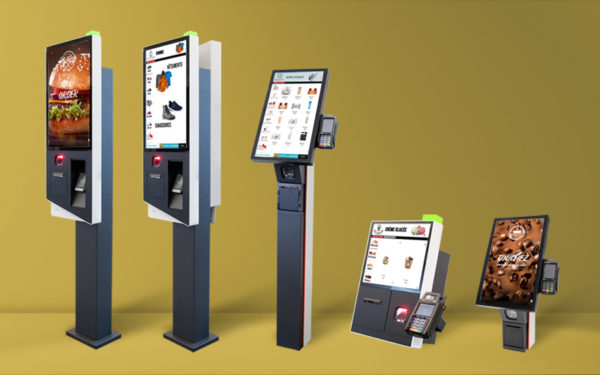With some types of IT hardware, it really doesn’t matter how or where they are deployed in business. A laptop, for example, does the same job whether it is being used in a company head office or on a retail shop floor or on the production line of a manufacturer.
To a certain extent, the same applies to EPOS terminals. Sales transactions follow much the same process whether you are in a fashion outlet or a supermarket, a bar or a restaurant. As long as your EPOS device can identify the item, log the price and process payment, the rest is about finer details.
Things are a little different with self-service kiosks. Kiosks are having a huge impact on customer-facing operations across a wide range of commercial sectors, and for good reason. They help businesses create a better customer experience by streamlining service, cutting queues and empowering modern consumers to help themselves, something we are all increasingly used to doing thanks to the influence of web-based and digital commerce. In this new and evolving world we now find ourselves in coming out of a global lockdown this is even more prevalent.
Business owners understandably see the way kiosks are being used in, say, the QSR sector, noting the way McDonalds, and others have reported an increase in average spend as well as lower waiting times since deploying them, and they think – I want that for my business.
But it is not quite as simple as a fashion retailer or a grocery store or even a casual dining establishment being able to install the types of kiosk McDonalds uses and enjoying the same kind of success.
The Right Kind of Configuration
Whereas conventional EPOS terminals essentially handle the very last stages of a transaction – logging the sale and processing payment – kiosks, have to provide several other functions leading up to that, plus, in some cases, a different range of outputs. While payment processing might be much the same from one sector to the next, the steps leading up to it, and the actions that follow it, often differ significantly.
Kiosks have to have the right kind of physical configuration to reflect these differences.
Here are a couple of obvious examples to demonstrate the point. One of the key requirements of a self-service checkout in a supermarket is having a set of scales in the bagging area. This is an anti-theft/fraud device which checks that the weight of the item set down matches what has been scanned or input on the screen, stopping people swapping high-cost items for cheaper alternatives.
These scales are physically large, even slightly cumbersome – but they provide an essential function in that environment. Such scales are completely unnecessary in a QSR restaurant or fashion boutique. In a clothing or footwear store, you would still need a barcode scanner for logging items, but maybe a different kind of security feature such as a tag remover, although the tag remover would be totally unnecessary in a hospitality environment.
Three different retail environments, three different configurations – but all kiosks. This is the most diverse technology available to aid the retail, hospitality, leisure and travel sectors amongst many others, but the right configuration is key to their success. Get this right from the start and the improved customer experience and operational efficiencies will accelerate your return on investment exponentially relative to almost all other projects.
In recognition of the fact that different types of businesses need different things from their kiosks, although AURES manufactures a standard range of self-service hardware which include a core range of components we also provide a consultancy approach to help you arrive at the right solution, Our expertise in providing solutions in a diverse range of sectors can help you navigate through this initial decision making process, We realise that no one size fits all when it comes to kiosks.
To find out more, get in touch with us to arrange a consultation with our UK sales team.




